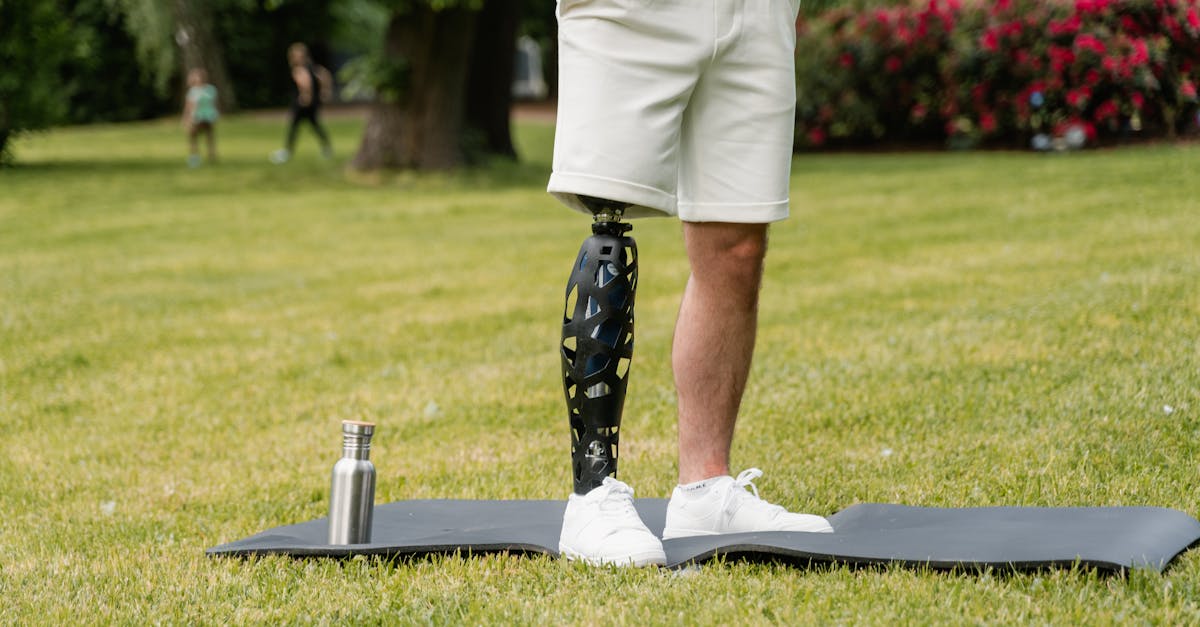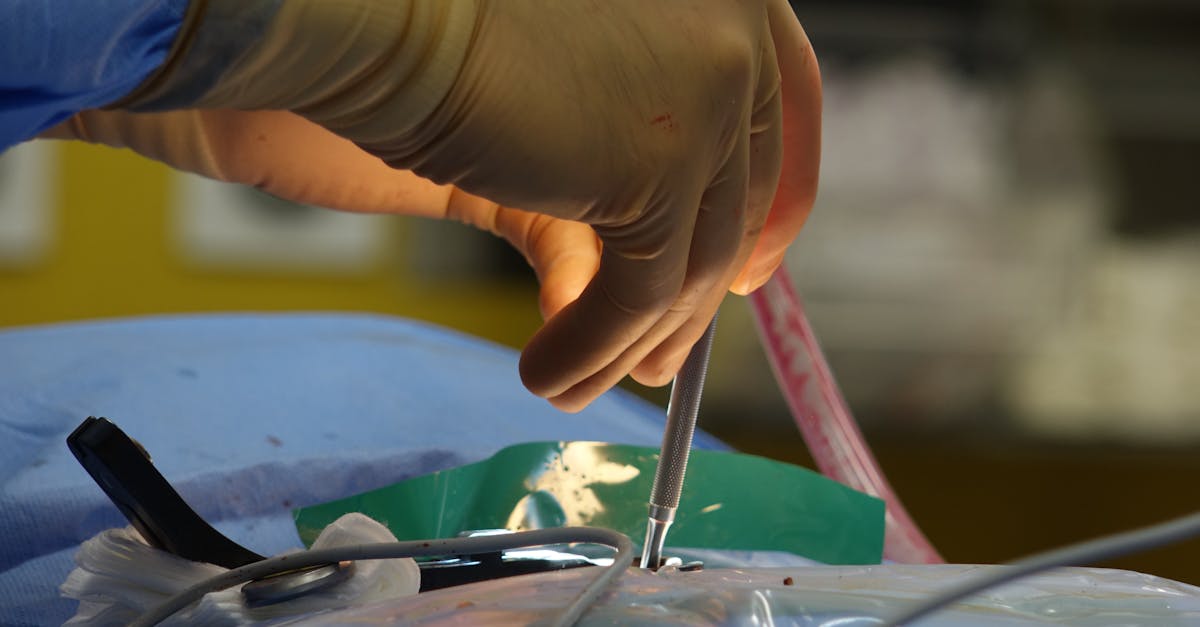|
In Short, tackling dizziness is a vital priority for improved health that reveals the crucial link between poor posture and imbalance. By enhancing alignment in daily activities like sleeping, sitting, and lounging, individuals can experience significant benefits such as reduced discomfort and improved overall well-being. This approach works by correcting misalignments that place strain on the body, fostering a more balanced state free from unnecessary tension. Simple adjustments, such as practicing better posture and being more mindful of body alignment, can transform daily experiences and enhance quality of life. |
Tackling Dizziness: The Impact of Poor Posture and Tips for a Better Alignment explores the often-overlooked connection between dizziness and poor posture. It emphasizes how misalignment, particularly due to a forward head posture and slouched positions while sitting or sleeping, can lead to tension, discomfort, and vertigo. The article offers practical tips aimed at improving alignment, such as mindful posture awareness, ergonomic furniture usage, and regular movement breaks to alleviate muscle strain and enhance overall well-being.

Welcome to Pulse Align, where we believe that restoring your body’s natural balance and posture should be a gentle and nurturing journey. Our innovative approach utilizes imperceptible pulses to recalibrate muscle tone symmetry, promoting overall well-being and enhancing functional balance.
Discover the Pulse Align Method
Pulse Align is a non-invasive method designed to support the body’s natural processes through subtle stimulation. By focusing on the recalibration of muscle tone and posture, this approach often leads to reduced tension throughout the body. Clients regularly express their appreciation for this holistic methodology, which invites positive change without the need for invasive interventions.
Emphasis on Natural Recalibration
At Pulse Align, our goal is not to directly address discomfort or conditions but rather to empower the body to recalibrate itself naturally. By promoting muscle tone symmetry, many clients experience improved comfort and posture, contributing to an enhanced sense of well-being. This gentle alternative method resonates deeply with individuals seeking a balanced and harmonious lifestyle.
Personalized Wellness Journey
Our personalized approach is evident in the heartfelt testimonials from clients who have experienced notable improvements in muscle tension, postural balance, and overall wellness. The supportive environment at Pulse Align allows families to explore these benefits as part of their overall health journey. Our services are designed for everyone, including children and expectant mothers, who can all reap the rewards of this family-friendly approach.
Connect With Us Today
We invite you to visit the Pulse Align website to learn more about our services, find a location near you in cities like La Prairie, Mont-Royal, and Terrebonne, and book a consultation for yourself or your family. Remember, Pulse Align works in conjunction with your existing healthcare services, enhancing your wellness journey without replacing it. Together, let’s embrace a safer, non-invasive approach to restoring balance and harmony in your life.
The information provided here complements your healthcare team. We encourage you to remain under their supervision for any medical condition. Our goal is to support your body’s intrinsic ability to restore balance and improve your well-being.
Tackling Dizziness: The Impact of Poor Posture and Tips for Better Alignment
- Forward Head Posture: Can lead to neck strain and dizziness.
- Rounded Shoulders: May affect breathing and contribute to lightheadedness.
- Slouched Back: Causes fatigue and impairs blood circulation.
- Sleeping Positions: Use supportive pillows to align the spine.
- Sitting with Proper Alignment: Keep feet flat and back straight to enhance stability.
- Regular Movement: Take breaks to stretch and realign the body.
- Mindfulness Practices: Enhance body awareness to prevent poor posture habits.

Dizziness is a common yet frequently overlooked condition, often linked to poor posture. This article explores the connection between inadequate alignment of the body and the symptoms of dizziness while providing practical recommendations for achieving better posture. By addressing posture through simple adjustments in daily activities, individuals can significantly reduce discomfort and promote a sense of equilibrium in their lives.
Understanding the Link Between Dizziness and Posture
Recognizing the relationship between poor posture and dizziness is crucial for finding relief. Often, individuals may not realize how their daily habits contribute to misalignment. For example, spending long hours at a desk with a forward head posture can lead to muscle strain, headaches, and sensations of dizziness. The cervical spine bears the weight of the head, and when misaligned, it can create tension that impacts balance and stability.
Furthermore, prolonged slouching while sitting or improper sleeping positions can exacerbate issues, leading to a cycle of discomfort and dizziness. Acknowledging these habits is the first step toward making beneficial changes.
Practical Tips for Improving Posture
Awareness and Mindfulness
The first step in improving posture is to cultivate awareness of your body’s alignment throughout the day. Regularly perform posture checks by assessing how you position your head, shoulders, and spine, whether sitting, standing, or lying down. Incorporate mindfulness techniques into daily routines to improve body awareness.
Proper Sitting and Workplace Ergonomics
Adjust your workspace to promote a healthy sitting posture. Ensure that your chair provides lumbar support, and align your monitor at eye level to avoid leaning forward. Sit with your back straight and feet flat on the floor, maintaining an angle of approximately 90 degrees at the knees. Remember to incorporate frequent breaks to stretch and realign your body.
Sleeping Positions
Your sleep position significantly affects your posture during waking hours. Use a supportive pillow that keeps your neck and spine aligned. For back sleepers, a thinner pillow that supports the natural curve of the neck works best, while side sleepers should choose a pillow that fills the space between the head and mattress without bending the neck excessively.
Exercises and Stretches
Engaging in specific exercises that focus on strengthening the back and neck muscles can promote better posture. Incorporate stretches that relieve tension and enhance flexibility in the shoulders and neck. Exercises like neck rolls, shoulder shrugs, and chest openers can greatly help in reducing muscle stiffness that contributes to dizziness.
Utilizing Tools for Better Alignment
Consider utilizing tools that support proper posture in daily activities. Items such as ergonomic chairs, standing desks, or posture correctors can provide the necessary support. Additionally, technology that offers reminders to check your posture can help maintain awareness throughout the day.
Embrace a Holistic Approach
Improving posture is not merely about physical adjustments but also about adopting a holistic approach that encompasses lifestyle changes. Prioritize hydration, nutrition, and stress management, as these factors influence neuromuscular health and overall well-being. Practices such as yoga or Pilates can improve alignment while promoting relaxation and mindfulness.
By implementing these strategies, individuals can experience remarkable benefits not only in reducing dizziness but also in enhancing their overall quality of life. The journey toward better posture and reduced dizziness begins with awareness and commitment to making mindful changes.
Integrating the principles of Pulse Align into your health routine fosters a deeper understanding of the body’s mechanics, emphasizing the importance of muscle tone symmetry and recalibration of the nervous system. Taking charge of your alignment today can lead to a more balanced, healthy tomorrow.
| Impact of Poor Posture | Tips for Better Alignment |
| Can lead to increased dizziness due to muscle strain. | Incorporate posture checks throughout the day. |
| Creates imbalance in the body, affecting stability. | Practice balanced movements to enhance alignment. |
| Contributes to tension headaches and neck strain, exacerbating dizziness. | Use proper supportive furniture to maintain alignment. |
| Poor head positioning increases the likelihood of experiencing vestibular issues. | Maintain a neutral head position while working. |
| Extended slouching can hinder blood circulation. | Incorporate regular stretch breaks during long sitting periods. |
| Alters breathing efficiency due to torso misalignment. | Engage in deep breathing exercises for better oxygen flow. |
| Can impair neuromuscular function. | Practice core strengthening exercises to enhance stability. |
| Can lead to chronic tension and discomfort over time. | Seek mindfulness practices that aid in body awareness. |
| Increases fatigue and reduces energy levels. | Optimize sitting and sleeping positions for better alignment. |
| Negatively impacts overall daily activities. | Embrace a holistic warm-up routine before activities. |

The Wellness Journey: Embracing Balance and Restoring Well-Being
“Since starting my sessions at Pulse Align in Mont-Royal, I’ve noticed a remarkable difference in my overall well-being. The gentle adjustments and focus on posture have helped me regain my balance, something I thought lost forever. I never realized how much my poor posture was contributing to my dizziness. Now, I feel more centered and energized in my daily life.” – Marie L.
“After relocating to Châteauguay, I was eager to find a solution for my chronic dizziness. I was impressed by how Pulse Align tailored their approach to align with my specific needs. Through their unique methods, I feel my body has naturally recalibrated itself, allowing me to move without the unsettling sensation of dizziness. I highly recommend their services to anyone struggling with postural alignment issues!” – Mark T.
“Living in Sainte-Marie, I was hesitant at first, but after experiencing the remarkable changes brought about by Pulse Align’s methods, I can wholeheartedly say it’s been life-changing. My neck and back tension have significantly decreased, and I can finally enjoy my activities without worrying about feeling dizzy. Their support goes beyond just treatments; it fosters a genuine path to wellness, helping you discover your body’s ability to heal.” – Jennifer S.
“Pulse Align has truly transformed my experience with dizziness. Being in Les Escoumins, I felt there were limited options available until I found them. Through their holistic approach, I’ve noticed my posture improve, which has greatly reduced the uncomfortable sensations I used to feel. It’s great to know there’s a supportive community not far away that understands the importance of body alignment.” – Peter R.
“As a resident of Chicoutimi, I was skeptical about how much impact posture could have on my dizziness, but attending sessions at Pulse Align has provided me with significant insights and relief. I never expected to feel so refreshed and balanced after making simple adjustments. This isn’t just another wellness center; it’s a place where empowerment through healing becomes possible.” – Sarah M.
“In Terrebonne, I found Pulse Align after months of searching for relief from dizziness linked to poor posture. Each session left me feeling anew, as if my body was resetting itself. The staff is knowledgeable and compassionate, emphasizing a journey towards wellness that feels genuine. I’ve seen improvement in my energy levels and overall health, making this experience invaluable.” – Eric W.
Discover how Pulse Align can support your journey towards better posture and wellness in your local area by visiting Our Clinics. Pulse Align’s commitment to working alongside healthcare teams ensures a holistic approach to your health, facilitating enhanced body function for you and your family on this wellness journey.
Dr. Sylvain Desforges is a prominent figure in the field of health and wellness, recognized for his expertise in osteopathy, naturopathy, and manual medicine. As the founding president of TAGMED clinics and the ACMA association, he has dedicated his career to healthcare innovation, focusing on the enhancement of patient outcomes through advanced treatment methodologies.
With a specialized interest in chronic pain management, Dr. Desforges has made remarkable contributions to understanding the relationship between poor posture and its associated symptoms, including dizziness. His extensive training in various therapeutic techniques allows him to provide an integrated approach to health that combines traditional practices with cutting-edge technology. His commitment to evidence-based care ensures that patients receive not just immediate relief but strategies for long-term wellness.
At TAGMED clinics, patients benefit from Dr. Desforges’s proficient use of spinal decompression, laser therapy, and shockwave therapy, tailored to address individual health concerns. These advanced modalities work synergistically to alleviate discomfort, enhance mobility, and promote optimal alignment of the body. Dr. Desforges has crafted a set of personalized treatment plans centered on the core principle that effective health solutions must address both symptoms and root causes.
One of the pivotal issues addressed by Dr. Desforges is the profound impact of poor posture on everyday life. As many individuals experience discomfort stemming from misalignment—particularly in the neck and back—he emphasizes the need for awareness and correction of these daily habits. He notes that activities such as sitting at a desk, using electronic devices, or improper sleeping positions can set the stage for tension-related disorders. The effects of forward head posture can manifest as headaches, muscle strain, and, notably, dizziness.
Dr. Desforges encourages individuals to take a proactive stance in their posture correction routines. Simple adjustments, such as maintaining an upright position while seated, using supportive furniture, and taking regular breaks to stretch, can lead to significant improvements in alignment and overall health. He highlights the importance of breathing exercises, which can enhance oxygen flow and contribute to a more relaxed state, alleviating the detrimental effects of tension in the upper body.
In addition to providing direct patient care, Dr. Desforges is an advocate for public education regarding the importance of alignment and its correlation to dizziness and balance disorders. He frequently engages with the community, delivering workshops and seminars aimed at raising awareness about the challenges posed by poor posture and offering practical tips for adjustment.
Through his work at TAGMED, Dr. Desforges exemplifies a dedication to patient-centered care. His clients, often from regions like Montreal, Terrebonne, and Mont-Royal, report remarkable transformations in their health after engaging with his services. His holistic philosophy promotes not only physical rehabilitation but also the empowerment of patients to take control of their own health journeys.
Dr. Desforges’s approach is a testament to the effectiveness of combining traditional knowledge with contemporary innovations in health care. By focusing on the intersection of posture and wellness, he operates at the forefront of a movement that champions proactive health management, aiming to restore balance and alleviate the burdens of chronic discomfort and its related symptoms.
Neurovertebral Decompression Technology by TAGMED
Mechanism of Action
The neurovertebral decompression technology utilized by TAGMED functions by applying controlled and gradual traction forces to the spinal column. This innovative method effectively increases the space between vertebrae, which significantly reduces pressure on intervertebral discs and nerve roots. As the vertebrae are gently pulled apart, this process enhances fluid circulation in the targeted areas, facilitating the delivery of nutrients to the spinal structures and promoting healing. By alleviating pressure and improving fluid dynamics, this approach contributes to a decrease in inflammation and provides relief from chronic pain.
Specific Benefits
This non-invasive technique is particularly competent in relieving chronic pain and symptoms associated with conditions such as disc herniation, disc bulging, and moderate to severe spinal or foraminal stenosis. The reduction of pressure on neural structures optimizes the circulation of fluids around the discs, which is crucial for enhancing recovery rates. Patients often report a noticeable improvement in their overall quality of life, as this method not only alleviates discomfort but also allows individuals to regain mobility and engage more fully in daily activities.
Comparison with Other Treatments
When comparing TAGMED’s neurovertebral decompression technology to other commonly used therapeutic methods such as analgesics, corticosteroid injections, surgery, or traditional physical therapy, its unique advantages become evident. Unlike surgical interventions, which may carry significant risks and result in lengthy recovery periods, this technique is non-invasive and possesses a much lower risk profile. Furthermore, patients often experience quicker recovery times, reducing their reliance on medications and minimizing potential side effects associated with pharmacological treatments. This holistic approach emphasizes the body’s natural healing processes, providing an effective alternative to conventional therapies.
Case Studies or Testimonials
Numerous patient testimonials highlight the effectiveness of TAGMED’s neurovertebral decompression technology in managing chronic pain levels. For instance, patients have reported lasting reductions in their pain, allowing them to return to their daily routines more swiftly. These accounts underscore substantial improvements in pain management and a notable decrease in reliance on medications, showcasing a shift toward a healthier and more sustainable approach to pain relief. Individuals have expressed gratitude for regaining their independence and resuming activities they previously enjoyed but had to forgo due to discomfort.
Conclusion: Tackling Dizziness through Better Posture
The link between dizziness and poor posture is well-established, revealing how significant adjustments can lead to remarkable improvements in overall well-being. Many individuals unknowingly contribute to their feelings of unsteadiness through habitual misalignment and unawareness of their body’s positioning. By understanding how posture affects physical health, individuals can take proactive steps to alleviate their discomfort and improve their quality of life.
Addressing bad posture involves a multifaceted approach that emphasizes awareness and practical adjustments. Simple strategies such as being conscious of head positioning, regularly checking alignment throughout the day, and optimizing sleeping positions can have lasting impacts. By cultivating a strong awareness of body mechanics, one can significantly influence both immediate and long-term health outcomes.
Additionally, integrating postural exercises into one’s routine helps to strengthen core and neck muscles, promoting better alignment and reducing tension. Implementing regular breaks during prolonged sitting or standing can further encourage proper posture and enhance blood circulation, ultimately leading to greater comfort and balance.
Ultimately, seeking assistance from professionals, such as physical therapists or posture specialists, can yield personalized strategies that specifically address individual needs. The combination of personal commitment to alignment and professional guidance can pave the way toward sustained improvements in health and well-being. By prioritizing proper posture in daily routines, anyone grappling with dizziness can find relief and restore equilibrium in their lives.

Do you suffer from a chronic condition that responds little or not at all to conservative treatments?
At Pulse Align, we invite you to discover a gentle, non-invasive method designed to assist your body in restoring its natural balance and posture through subtle, imperceptible pulses. This innovative approach focuses on promoting overall well-being by encouraging muscle tone symmetry and alleviating tension in the body. By addressing the intricate relationship between posture and well-being, Pulse Align provides clients with a pathway to a more harmonious and balanced life, free from the burdens of discomfort.
We understand that discomfort can arise from various lifestyle factors, and our goal is to support your body’s natural recalibration process without directly targeting any specific condition. Instead of focusing solely on discomfort, Pulse Align empowers clients to experience amazing improvements in comfort, balance, and posture through a holistic approach. This gentle method encourages the body to self-regulate and restore its internal equilibrium, paving the way for enhanced well-being in everyday life.
Our commitment to a personalized approach at Pulse Align has resulted in numerous positive experiences from our clients. Many have shared testimonials highlighting significant improvements in neck and back tension, overall wellness, and a renewed sense of vitality. Clients often report feeling more balanced and aligned after engaging with our services, leading to a better quality of life. This emphasis on individual experience resonates deeply within our community, affirming the importance of holistic practices in fostering well-being.
We invite you
Frequently Asked Questions
Vértigo
Is sudden hearing loss with vertigo serious?
It may indicate inner ear issues like Meniere’s or labyrinthitis. Consult a doctor.
¿Qué hacer ante un vértigo repentino?
Sentarse o recostarse, fijar la vista en un punto estable, evitar movimientos bruscos y consultar si los vértigos persisten o se acompañan de otros síntomas.
¿Los problemas de presión arterial causan vértigo?
La hipotensión ortostática (bajada de presión al levantarse) puede provocar mareos. Problemas circulatorios cerebrales también pueden desencadenar vértigos.
La déshydratation peut-elle entraîner des vertiges ?
Oui, une faible hydratation diminue la pression sanguine et peut provoquer des étourdissements.
La manœuvre d’Epley est-elle efficace contre le VPPB ?
Oui, cette manœuvre permet de repositionner les cristaux dans l’oreille interne, soulageant les vertiges dans la plupart des cas.
La maladie de Ménière est-elle chronique ?
Oui, c’est une maladie chronique qui évolue par crises, avec des périodes de rémission et de rechutes.
¿La deshidratación puede provocar vértigos?
Sí, una baja hidratación disminuye la presión sanguínea y puede provocar mareos.
¿Es necesaria una operación quirúrgica?
Raramente, para ciertas causas (por ejemplo, descompresión de un canal semicircular). La mayoría de los vértigos se tratan sin cirugía.
¿Una carencia de vitamina B12 puede causar vértigo?
Una carencia grave puede generar síntomas neurológicos, incluyendo mareos, aunque es menos frecuente.
¿La diabetes puede causar vértigos?
La hipoglucemia puede causar mareos, pero no es un verdadero vértigo.
Zoé Rousseau believes that knowledge is the most powerful step toward healing—and she’s here to illuminate the path forward for anyone facing the challenges of vertigo. At Pulse Align, Zoé not only highlights the latest breakthroughs in neuromodulation and non-invasive health technologies but also translates complex research into practical, everyday guidance. Her approach is grounded in empathy and fueled by a genuine drive to help readers find balance, both literally and figuratively. From exploring advanced treatments to sharing firsthand patient stories, Zoé’s heartfelt advocacy ensures that no one has to face the spinning world of vertigo alone.
Medical Disclaimer
The information and advice provided on this site do not replace the advice, diagnosis, or treatment of a healthcare professional. Please note that the author of this article is neither a doctor nor a specialist in a medical specialty as defined by the Collège des médecins du Québec. Manual medicine, functional medicine, and sports medicine as described on this site exclude any medical treatment or diagnosis made by a doctor or medical specialist. Always consult your doctor for any medical questions. For more details, please read our complete Legal Notice.




